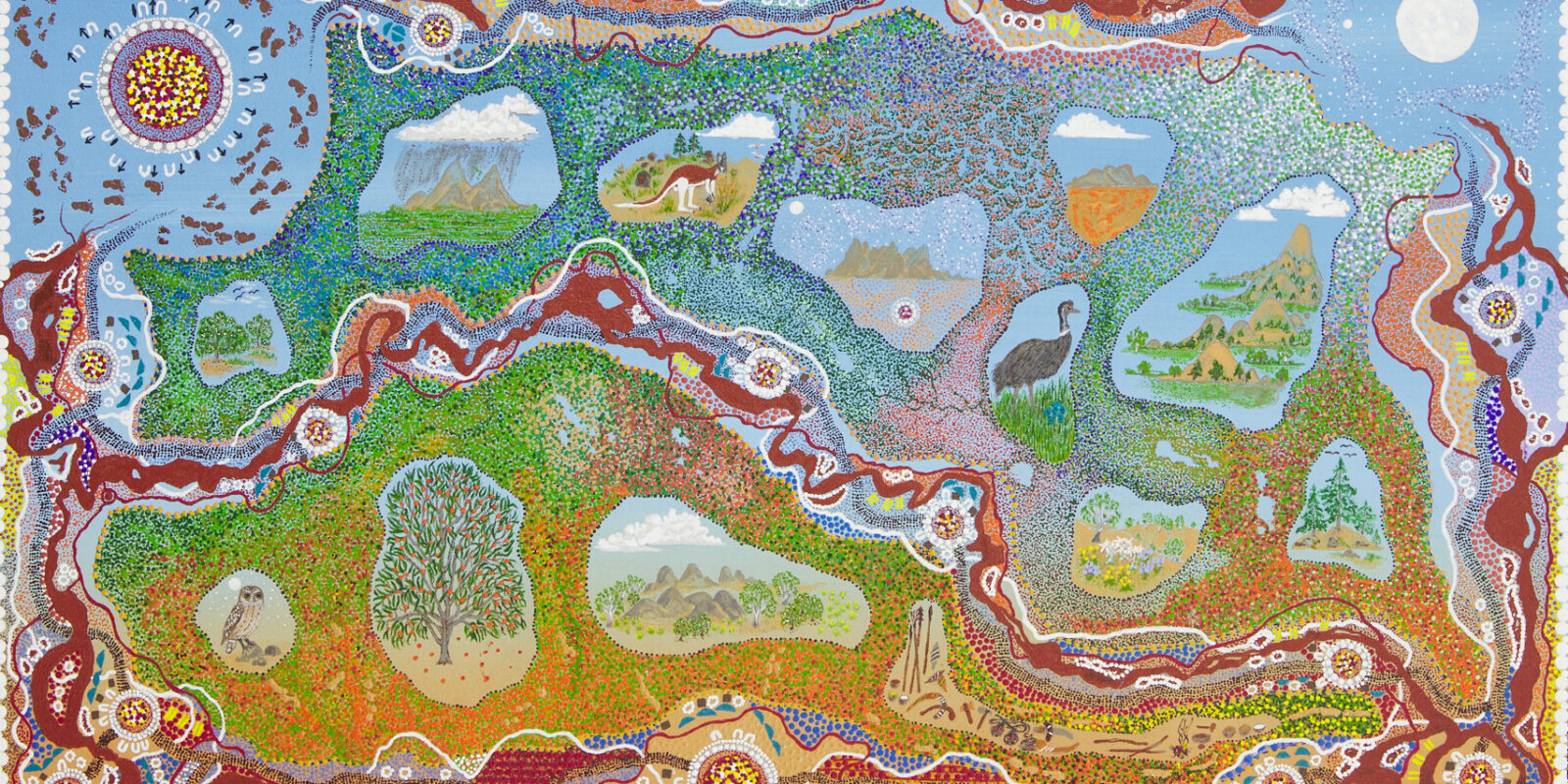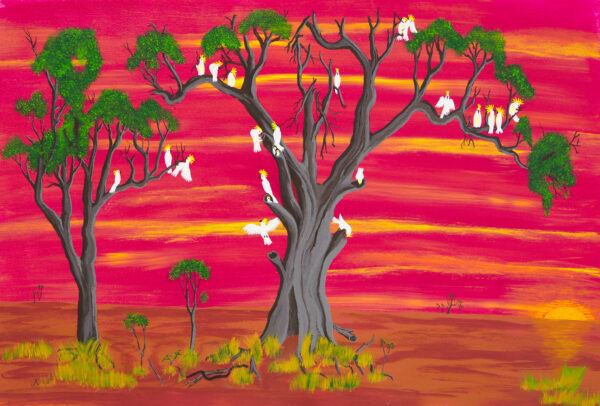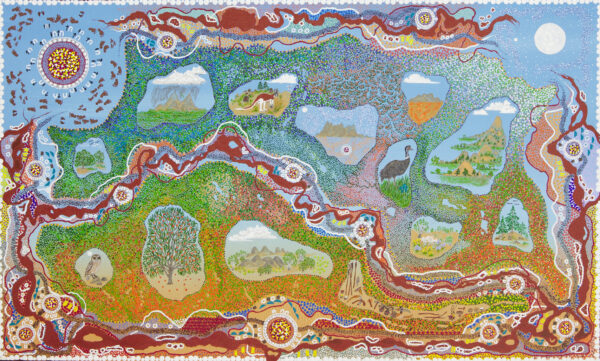
The recreation of traditional-style painting connected to an artist’s Heritage Community is a popular exercise amongst First Nations artists in The Torch’s program. An artist’s knowledge of their Heritage Community’s styles, and both the traditional and contemporary stories they can tell, provides them with an outlet to attain or maintain their connection to Culture and Country whilst active in the program.
In synthetic ochres, and reds, brown and black, reflective of organic pigments found in the Northern Territory, Putecharung paints the concentric circles of Kamu culture along the Daly River. ‘This painting represents the power of networks and finding new avenues in life,’ he writes of the painting Six Degrees of Separation. ‘It’s a meaningful reminder of the new opportunities that will come during the lead up of my release from prison.’
In contrast, Nev (Gunaikurnai/Kala Lagaw Ya people) details vividly in vibrant colour the cycle of natural world in their painting The Circle of Life. Nev employs a literal, figurative style to convey this story of Country. ‘The trees feed the cockatoo’s gum nuts,’ they share, ‘the birds feed the tree, trim dead growth, create housing for future generations. The snake represents the accidents we may have when we are careless. The saplings are the future homes.’
Figurative works are enjoyed for their accessibility, giving direct visual narratives about colonisation, childhood memories of urban and mission life, and artists in The Torch program such as Hippai Francis (Kamilaroi people) have combined multiple art-styles on the one canvas to convey their narratives. Francis’ painting The Lands of the Namoi River People, blends both figurative and traditional styles to reminisce upon, and educate the viewer about, their Heritage Country in the dry central-eastern districts, the view as seen from the sky above. ‘Looking down on the lands of the Namoi River people from the Guinbrai clan, the stylised river flows across the land,’ they describe it. ‘Since time immemorial, the families have gathered, living in their gunyahs and cooking in earth ovens. They are born, grow, live, hunt and gather around the river and wetlands and the surrounding mountains, hills, and plains. Here children played; here people died and are buried.’ Francis utilises dots to depict the surrounding Country, ‘its plains, woodlands, forests, hills, and mountains’; and within this they adopt figurative pictures to educate the viewer about ‘common trees such as the cypress pine, red gum, wilga, and wattles. Important totem animals are also shown, such as the red kangaroo, emu and red cockatoo, and the sky with its own life.’
Separately, each of these three First Nations artists embraces a visual style – traditional, contemporary, or both – that appropriately conveys the stories they wish to tell – stories of their own life, of their Heritage Country, and their Culture. Whether surviving through colonisation to the present, or directly influenced by it, whether ancient or new, each style reflects for these artists the ‘great tapestry of human life,’ says Francis, ‘and of the world around them’.


